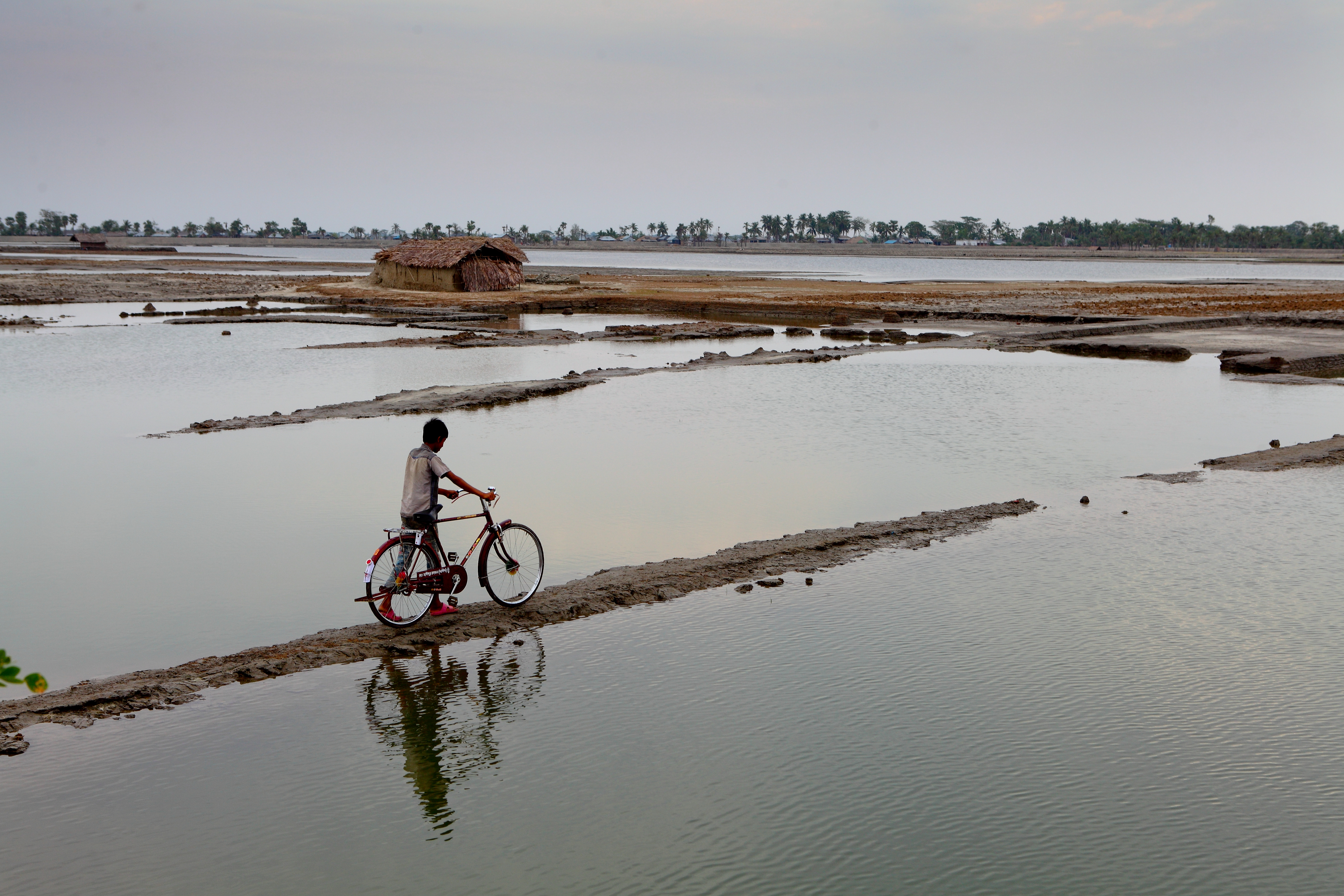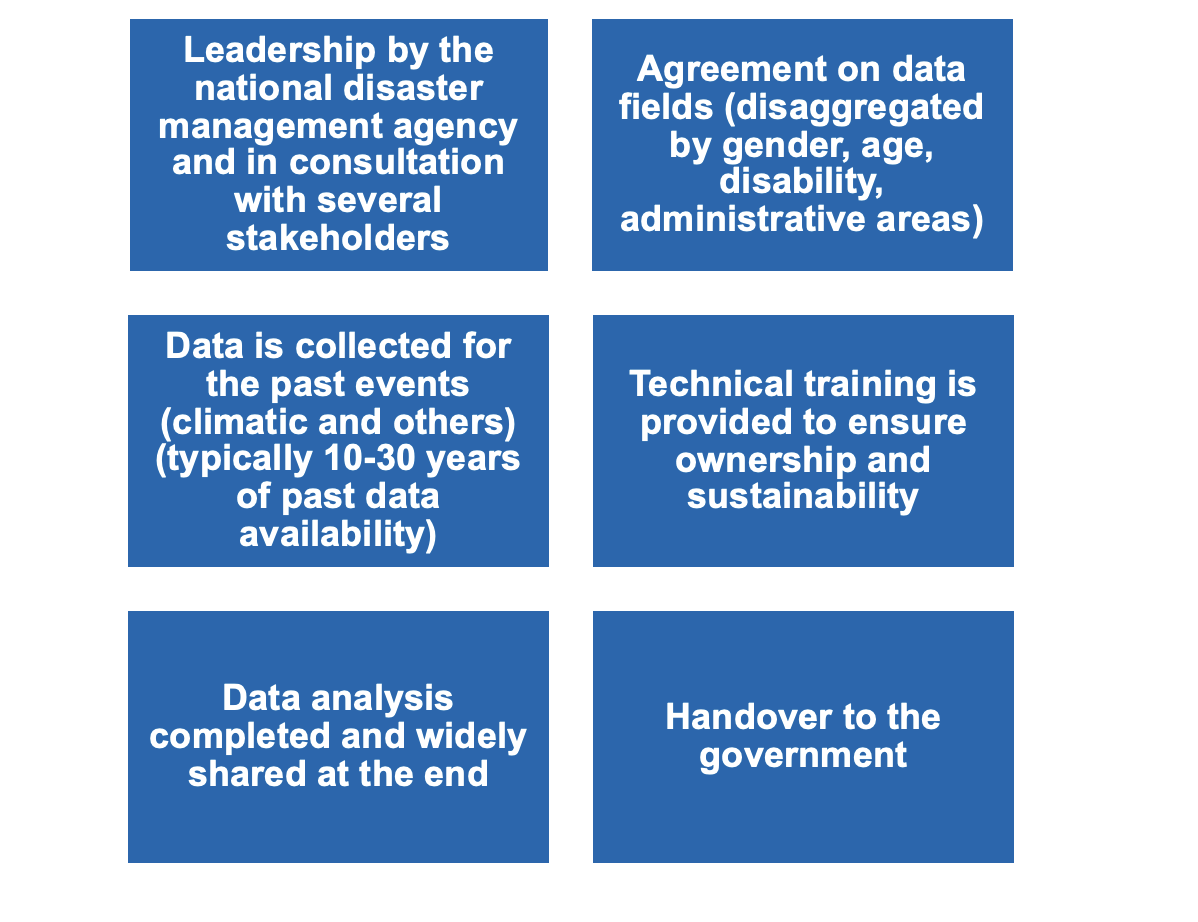Rajesh Sharma, Programme Specialist, Disaster Risk Information & Application
Using Data to Track Loss and Damage from Climate Change
November 15, 2023

Guided by agreed international standards and protocols, the practice of recording loss and damage can significantly improve harmonized reporting and transparency, inform policies, and provide support to various climate-related actions.
At the UN’s climate conference in Sharm El-Sheikh last year, governments agreed to provide ‘loss and damage’ funding to vulnerable countries hit by extreme weather events linked to climate change. This funding would allow a country like Afghanistan, for example, to access additional funding to avert, minimize and address the negative impacts of climate change by building resilient communities, protecting livelihoods, and safeguarding ecosystems.
While the discussions on the fund are underway, it is important to establish a universally endorsed system for recording loss and damage. This will provide an important basis for estimating ‘loss and damage’ and seeking financial resources from the fund to minimize the negative impacts and to enhance transparency. For example, increasing incidence of heat waves, typhoons, droughts and their resulting impacts on people, communities, livelihoods, livestock, agriculture yield, can be better understood if these are recorded systematically and analyzed.
Fortunately, this doesn’t need to start from scratch!
Globally, many countries already maintain national disaster loss and damage data management systems which record key statistics on hazardous events and their adverse effects, some of it disaggregated at sub-national levels.
Analysis of data collected over decades clearly indicates increased incidence and impact of these events. Measures adopted by governments and development partners to mitigate the impacts of disasters begin to show their efficacy and benefits in the data over longer periods of time. For example, we’re able to see the recorded deaths in Cambodia from climate-related hazardous events down to the local level for the past 25 years. Measures to reduce deaths can be monitored and tracked over years to ensure effective implementation of policies and efficient utilization of funds.
These national data systems have also become an important source for monitoring the national and sub-national disaster risk reduction efforts and reporting for the Sendai Framework for Disaster Risk Reduction and the relevant Sustainable Development Goals.
The designated disaster management agency (DMA) in a country plays a leadership role in consultation with several other ministries and relevant agencies, such as respective national societies and other associations. Under the leadership of the DMA, with technical support from UNDP, a format for data collection could be finalized and the past data collected from agencies covering environment, health, public works, transport, agriculture, statistics, and others at national, provincial, and sub-national entities.
Finally, UNDP supports analysis of the data to derive useful insights and findings and share these in a national workshop. Using the capacities in place, the DMA continues to collect the data and use the analysis for supporting planning, decision-making and other risk reduction processes, including post-disaster recovery.

With the increasing impacts of, and interconnectedness between, both rapid and slow onset events, these national loss and damage data management systems can be leveraged to record the impacts of all types of hazardous events. Furthermore, when analyzed with the data collected following a major event and a Post Disaster Needs Assessment (PDNA), yields a comprehensive recovery framework featuring specific recommendations for building resilience.
The PDNA is a mechanism for joint assessment and recovery planning following a disaster. Anchored in the Tripartite agreement between the United Nations, the World Bank, and the European Union, this tool for post crisis assessment and recovery planning seeks to assess the impact of large-scale disaster events that results from most hazards, and help define a strategy for recovery, including the estimation of financial resources required to build back better.
In the medium to long term, analysis encompassing both rapid and slow onset events will provide national governments with a holistic view of the loss and damages and help them plan and implement coherent strategies and action plans, integrating disaster risk reduction and climate change adaptation to reduce losses and damages.
Given the relevance and importance of recording loss and damage in affected countries, UNDP, UNDRR and WMO along with other partners are collaborating to develop the next generation of disaster loss and damage tracking aligned with the digital maturity of countries and utilizing the latest technologies to record and analyze data. This builds on the long practice and experience of establishing national disaster loss and damage data management systems.
Guided by agreed international standards and protocols, this practice of recording loss and damage can significantly improve harmonized reporting and transparency, inform policies, and provide support to various climate-related actions.
UNDP with its wide network of country offices and long experience of implementing projects of similar scale, is well positioned to take this forward together with other partners and help build resilience against a range of complex impacts linked to a changing climate.

 Locations
Locations



